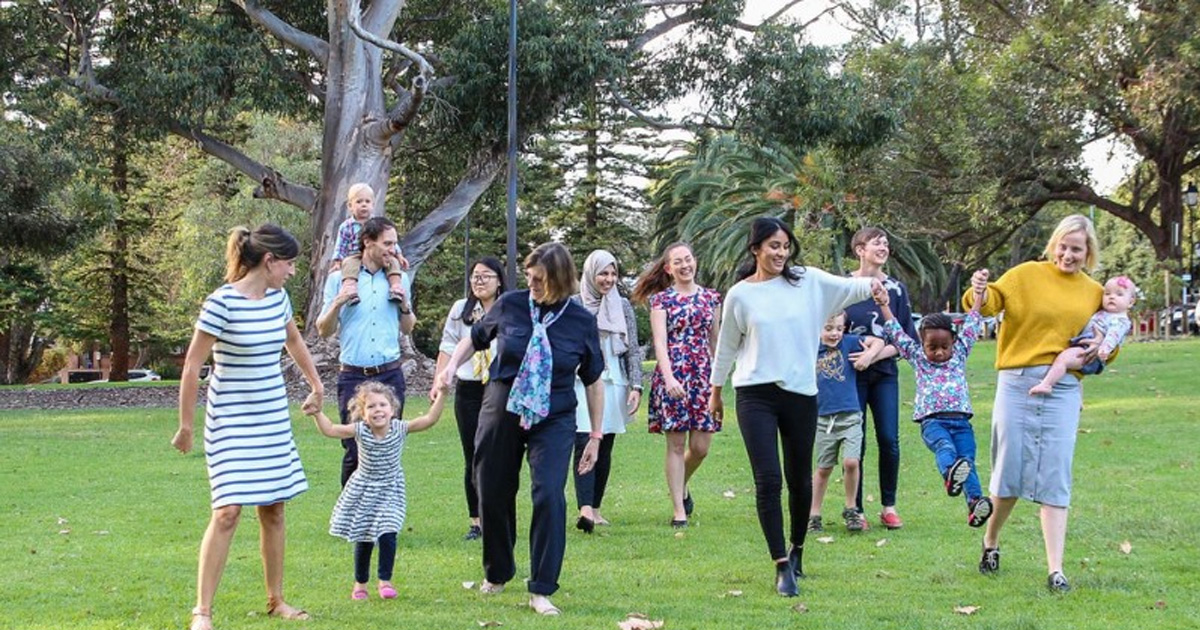
A project to uncover treatable traits to improve the lung health of people born preterm has been made possible thanks to a $1.99 million Medical Research Future Fund (MRFF) grant.
People born very prematurely (before 32 weeks of pregnancy) often face ongoing breathing problems, lung damage, issues with blood vessels in the lungs, and lasting obstructive airway disease throughout their lives.
For some people born preterm, lung disease worsens gradually over time, causing their lung function to deviate from the expected normal trajectory.
Those born preterm are more likely to be diagnosed with other respiratory diseases, such as chronic obstructive pulmonary disease (COPD). Similarly, rates of asthma are up to five times higher in those born preterm than the general population.
Thanks to significant advances in neonatal critical care throughout the 1990s the oldest survivors of very preterm birth are now just entering their 30's. However there is a lack of clarity around how preterm birth affects the lungs, who might have more problems, or what treatments work best.
What we do know is that lung issues in preterm-born individuals vary a lot, so a single treatment won't work for everyone, and it is important to identify features that can be targeted for particular treatments.
Titled FINGERPRINT: FINdinG Early markers of Respiratory disease for survivors of PReterm birth which IdeNtify Treatable traits, the five-year project led by Associate Professor Shannon Simpson, who is Co-Head of the Foundations of Lung Disease team at the Wal-yan Respiratory Research Centre and also from Curtin School of Allied Health, will develop traits of preterm lung disease using past and current information from groups of preterm birth survivors that we already know a lot about.
Associate Professor Simpson said sophisticated machine learning techniques will be used to understand the groups of traits that cluster together to define each type of prematurity-associated lung disease.
“We will include physiological traits - such as blocked, or overreactive airways, structural traits – like emphysema and lung tissue issues, clinical traits – such as poor quality of life and respiratory symptoms, and biological traits – like inflammation and weakened ability of the airway's protective layer to heal,” Associate Professor Simpson said.
“This multidisciplinary treatable traits-based approach will allow us to identify features that can be targeted for particular treatments, and is the first step towards a tailored medicine strategy to improve lung health for those born preterm.”
The study will be led by The Kids Research Institute Australia in collaboration with the University of Melbourne, Curtin University, The University of Western Australia, Erasmus University Medical Center, and Edith Cowan University.
The grant – awarded by the Federal Government’s Medical Research Future Fund under its Chronic Respiratory Diseases scheme – will be administered by Curtin University.
For more information on the MRFF, see here.
The Wal-yan Respiratory Research Centre is a powerhouse partnership between The Kids Research Institute Australia, Perth Children’s Hospital Foundation and Perth Children’s Hospital.
Fast facts about preterm birth
- Globally, more than two million babies are born at less than 32 weeks’ gestation every year
- Significant improvements in neonatal critical care throughout the 1990s drastically increased the survival rate of infants in this category
- Rates of preterm birth have increased in almost all countries over the past 20 years, including Australia, and now account for more than 11 per cent of births globally
- Bronchopulmonary dysplasia (BPD) – a chronic lung disease of prematurity -remains one of the most significant complications of preterm birth.
